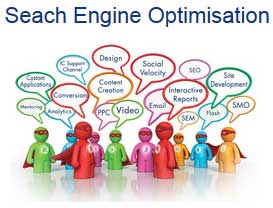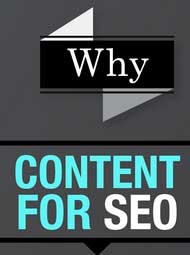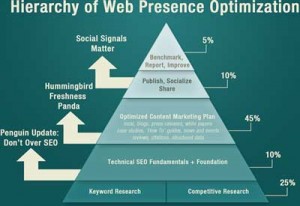
SEO requirements change frequently and that means finding ways to keep your search rankings up there. You need to know what to focus on and how to fix something that could be impacting your brand’s visibility. With more than 200 SEO ranking factors, which ones are more important?
If you want your website to claim the top spots on search engine results, you need to optimise your online presence accordingly. In this article, we look at answering the question of “what does SEO mean” while sharing the most important SEO ranking factors to bring you more business.
What Does SEO Mean?
This is a popular question as many people don’t quite understand Google rankings. As most of you may know, SEO stands for search engine optimisation and involves making a few tweaks to your website so search engines are more likely to rank it. Of course, this means Google but there are several other search engines including Bing, DuckDuckGo and Yahoo among others.
SEO ranking factors refer to elements or factors that determine the position of your content when someone searches for you (or a business like yours). Achieving a #1 SEO ranking means that when people search for a particular term, your content appears first. But remember, this excludes promoted results, featured snippets, and answer boxes.
What Are The Top SEO Ranking Factors?
Appearing in the top 3 results in Google is amazing as your click-through rates will increase significantly. However, anywhere on the first page (top ten results) will be hugely beneficial. To ensure your brand appears high on SERPs, here are some of the most important current SEO ranking factors. These change often so it’s vital that you keep updated on any updates.
Create Original, Quality Content
It’s no surprise that content is at the top of the list but it’s not all that simple. Make sure every web page has at least 300 words of original content as search engines can easily spot duplicate content. They may even penalise your page for using someone else’s work.
Always break content into smaller, shorter snippets of information to make it more attractive and easier to digest. Using H2, H3 subheadings and adding bullets or numbering will help split long pieces of text into bite-sized chunks.
Most importantly, online content should meet the EAT criteria which Google first introduced in 2018. This refers to Expertise, Authoritativeness, and Trustworthiness. One way to boost your EAT score is by including citations from experts and referring to reliable sources from ‘.edu’ or ‘.gov’ sites.
Get The On-Page SEO Ranking Factors Right
Creating quality content is one thing but you still have to optimise it properly for both search engines and people. Here’s a basic on-page SEO checklist to help you get to grips with what is required:
- Only choose one primary keyword per page and up to four related or group keywords
- Add the primary keyword to your URL, the title tag, Meta description and H1. Don’t overdo it though as keyword stuffing is a big No-No
- Place your primary keyword in the first 100-150 words of the article or web page
- Content should be of high a quality and standard, written for at least an eighth-grade reading level
- Use good content structure to make it more scannable
- Add at least 5-6 internal links and 2-3 external links using effective anchor text
- Include at least one image to your page
- Consider long-form content
Choose The Right Keywords
Keywords play a pivotal role in all things digital marketing and could be considered one of the most important SEO ranking factors. All online content should have target keywords that are effectively words or phrases visitors might search for that would ultimately send them to your site.
Whilst you must include a primary keyword for each page, it’s good to add a few secondary phrases as well. Consider using LSI keywords which are phrases similar or related to the primary keyword but not necessarily synonyms. You can find LSI keywords by using “Searches related to …” at the bottom of search engine results pages or by simply entering your keyword into the Google Ads keyword tool.
Recommended: ‘Keyword Research Tips And Tricks’
Improve Online Visibility With Quality Backlinks
There may be many SEO ranking factors based on your pages but backlinks refer to what is on other people’s websites. Google recognises when more visitors go to your website from other sites and subsequently increases your site ranking. Once this happens, Google regards your content as trusted and that’s where you want to be. There are several ways to generate backlinks including the following:
- Create compelling infographics and allow other people to use it in their content
- Ask existing clients, friends, family members, partners, colleagues and suppliers within your industry to link to your site
- Consider guest posting or guest blogging as it is still relevant and highly effective
Recommended: ’33 White Hat Ways To Build Backlinks For SEO’
Ensure Website Security Certification Is Up To Date
Amazing content will only get you so far, especially if your website or blog is inaccessible and not secure. If your site does not have SSL certificates by using HTTPS encryption, you won’t be able to generate high-quality backlinks as people will perceive your site as unsafe.
To ensure website security, always use an HTTPS encryption as it protects your platform and end-users. This includes personal information that users might provide such as contact and banking details, passwords or addresses.
Make sure you work with a reliable, trusted web developer as a well-coded site means Google bots can crawl your pages with ease. Include a “robots.txt” file to inform bots where they should and shouldn’t look and don’t forget the all-important sitemap.
Improve Page Load Speed
A fast-loading web page is another one of the more talked-about SEO ranking factors. With today’s available technologies, there should be no excuse to have a website that takes aeons to load. According to Google, sites should not take longer than 2 to 3 seconds as more than half of visitors will be more likely to abandon their search.
Server response time is another factor to consider as this impacts how long it takes your website to appear when someone enters your URL. The speed of your DNS provider is critical, so use this app to see how yours measures up. Here are a few things you can do to speed up your site:
- minimise HTTP requests
- minifying and combining files
- remove anything that is slowing down your page, flash graphics
- using asynchronous loading for JavaScript and CSS files
- consider switching to a CDN or get a faster host provider
Schema Mark-up And Site Authority As SEO Ranking Factors
SEO ranking factors may vary in importance but few are as critical as adding structured data (Schema mark-up) to your website. This is regarded as back-end microdata of sorts that tells Google how to classify and interpret the web page. It forms part of your backend site architecture and is something any experienced web developer will know about. Have a look at Schema.org as it provides a universal language for structured data.
Everything we have mentioned relates to domain authority, which is a quick measure of how well a page is performing in terms of SEO. Higher-scoring websites typically rank higher in search engines but can take a long time to build up, especially new websites. SEO ranking factors directly linked to site authority include on-page SEO, backlinks, and page loading speed.
Establish A Google My Business Listing
We mentioned earlier Google’s EAT guidelines and a crucial factor here is trustworthiness in having a reliable business listing. These are also referred to as citations and one of the most important SEO ranking factors at the local level.
A good way to demonstrate that your company is legitimate is to create a Google My Business listing. What some may not realise is that this connects to Google Search and Google Maps which makes it easier for clients to find you digitally and in the real world.
Improve your credibility even further by creating business profiles on industry-related online directories. Considering the importance of consistency in digital marketing, make sure to use the same business name, logo and contact information across all of your online profiles.
Stay Connected On Social Media
Have you noticed that more search engine results are showing links to social media profiles? Google has been paying more attention to social media which is great as those who used to buy followers can seriously backfire. If a social media account with 10,000 followers has zero interaction, chances are it is not a real company.
Being active on social media is great for boosting user engagement but don’t post random things on all platforms. Avoid using clickbait type content and spamming link requests or buying links from other sites. It’s best to promote larger, more engaging articles or posts as people are more likely to share well-researched, long-form articles addressing popular topics within your niche.
Consider Google Snippets
Another great way to improve your search engine ranking is through featured snippets. These appear ahead of regular rankings which automatically puts you in “position zero” of search rankings. Some feel it’s a little sneaky as you theoretically rank higher without “technically winning” the ranking war but there are certain updates that control what is shared.
One such update is BERT, Google’s “neural network-based technique for natural language processing (NLP) pre-training called Bidirectional Encoder Representations from Transformers.” They launched it on 9 December 2019 in 70 languages for both rankings and featured snippets. It allows Google to understand more complex queries.
Recommended: ‘Google Features Snippets: A 2020 SEO Guide’
Final Thoughts
How users experience your content ties in with most of what we discussed in this article. If your content is correctly optimised for human consumption and search engines, you’re already in a good position. However, these SEO ranking factors are just the start of a long journey into understanding what content marketing is all about.
This guide can help you on your path to a successful search engine ranking especially if you are new to content marketing. Just remember, a top Google ranking takes time, effort and attention to detail. Good SEO takes time as you have to build an online reputation of sorts before being rewarded with a higher ranking.
If you want to take your content marketing to a whole new level, contact WSI eMarketing today. We specialise in social media marketing, SEO, PPC, marketing automation, copywriting and email marketing among others.
Related Post
Top Tips for Product Page...
As the internet evolves and user expectation becomes increasingly sophisticated, creating...
- May 31, 2011
- By Rob Thomas
- e-Commerce
What is SEO?
SEO or Search Engine Optimisation to give it its full name is the process that helps your...
- July 29, 2013
- By Nadine Thomas
- Digital Marketing
3 Tips for Content Marketing...
What exactly is content marketing? Content marketing is a way of attracting and retaining...
- August 2, 2013
- By Rob Thomas
- Content Marketing
6 tips for creating good...
It wasn’t so long ago that the majority of internet socialites were using MySpace and...
- September 27, 2013
- By Rob Thomas
- Content Marketing
‘Push’ and ‘Pull’...
There are two types of marketing- push and pull- and depending on what business you are...
- October 10, 2013
- By Rob Thomas
- Content Marketing
5 Ways AdaptiveSEO™ can...
Changes in the world of Search Engine Optimisation (SEO) mean it’s getting harder for...
- March 7, 2014
- By Nadine Thomas
- Content Marketing











Leave a Comments